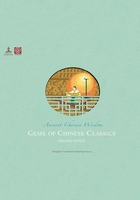
九章算术 (jiǔ zhāng suàn shù)
The Nine Chapters on the Mathematical Art
Trailblazing book for mathematics
Jiuzhang Suanshu, also known as the “Nine Chapters on the Mathematical Art,” is one of the oldest extant Chinese mathematical texts. It is widely deemed as the most important of the top 10 ancient books on mathematics produced in China.
The complete version of the book first appeared in the early years of the Eastern Han Dynasty (25-220 AD), and most researchers believe the book was composed by several generations of scholars starting as early as the 10th century BC.
The book effectively laid out the basic approach to mathematics in ancient China. It had influenced mathematical studies in the country for more than 1,600 years. During the Tang Dynasty (618-907 AD) and the Song Dynasty (960-1279) it was designated by the imperial court as the nation’s standard mathematics textbook, the first of its kind in the world.
As a unique feature, the book focused on computation and paid great attention to solving practical problems in daily life and production. It tended to favor solutions using the induction method over deduction, which was popular with most Western mathematicians.
However, the book failed to clearly define mathematical concepts and its computations, though quite abstract, and failed to provide manifest logic. That’s why many scholars in the following centuries made copious comments to explain the mathematical concepts implied in the book.
Among those scholars, Liu Hui (circa 225-295 AD), one of the greatest mathematicians of ancient China, and Li Chunfeng (602-670 AD), an outstanding astronomer and mathematician, were the best known for their annotations on the “Nine Chapters on the Mathematical Art.”

As its title indicates, the book was divided into nine chapters, dealing with a total of 246 math problems that people often came across in their daily life and work. It started by listing a problem and then provided one or multiple solutions and then explained the procedure that led to the solution.
The nine chapters in the book are: 1. Rectangular Fields (Fangtian); 2. Millet and Rice (Sumi); 3. Proportional Distribution (Shuaifen); 4. The Lesser Breadth (Shaoguang); 5. Consultations on Works (Shanggong); 6. Equitable Taxation (Junshu); 7. Excess and Deficit (Yingbuzu); 8. The Rectangular Array (Fangcheng); and 9. Base and Altitude (Gougu).
In Chapter 2, 3 and 6, the book expatiated on many proportion problems, which was very rare at that time in the world. In Chapter 7, again for the first time in the world, the book elaborated on the rule of false double position in solving linear problems, which was not found in Europe until the 13th century. Also, the book provided the world’s earliest systematic explanation of fractional arithmetic.
In Chapter 8, the book used a principle similar to the Gaussian elimination to solve systems of linear equations, but 1,500 years earlier than the one created by German mathematician Carl Friedrich Gauss (1777-1855). Also in this chapter, the book introduced negative numbers for the first time in the world and established rules for addition and subtraction of both positive and negative numbers.
In other parts of the world, it was not until the 7th century that Indian astronomer Brahmagupta (circa 598-668 AD) came up with the idea of negative numbers.
In Chapter 1 and 9, the book summed up the knowledge of geometry accumulated in daily life and production in the past and introduced a proposition which later was known as the Pythagorean theorem in the West.
The book not only influenced mathematical development in China for centuries, it also had a great influence on the neighboring countries. It was introduced into Korea during the Sui Dynasty (581-618 AD) and into Japan during the Tang Dynasty. Now it has been translated into Russian, German, English and French.